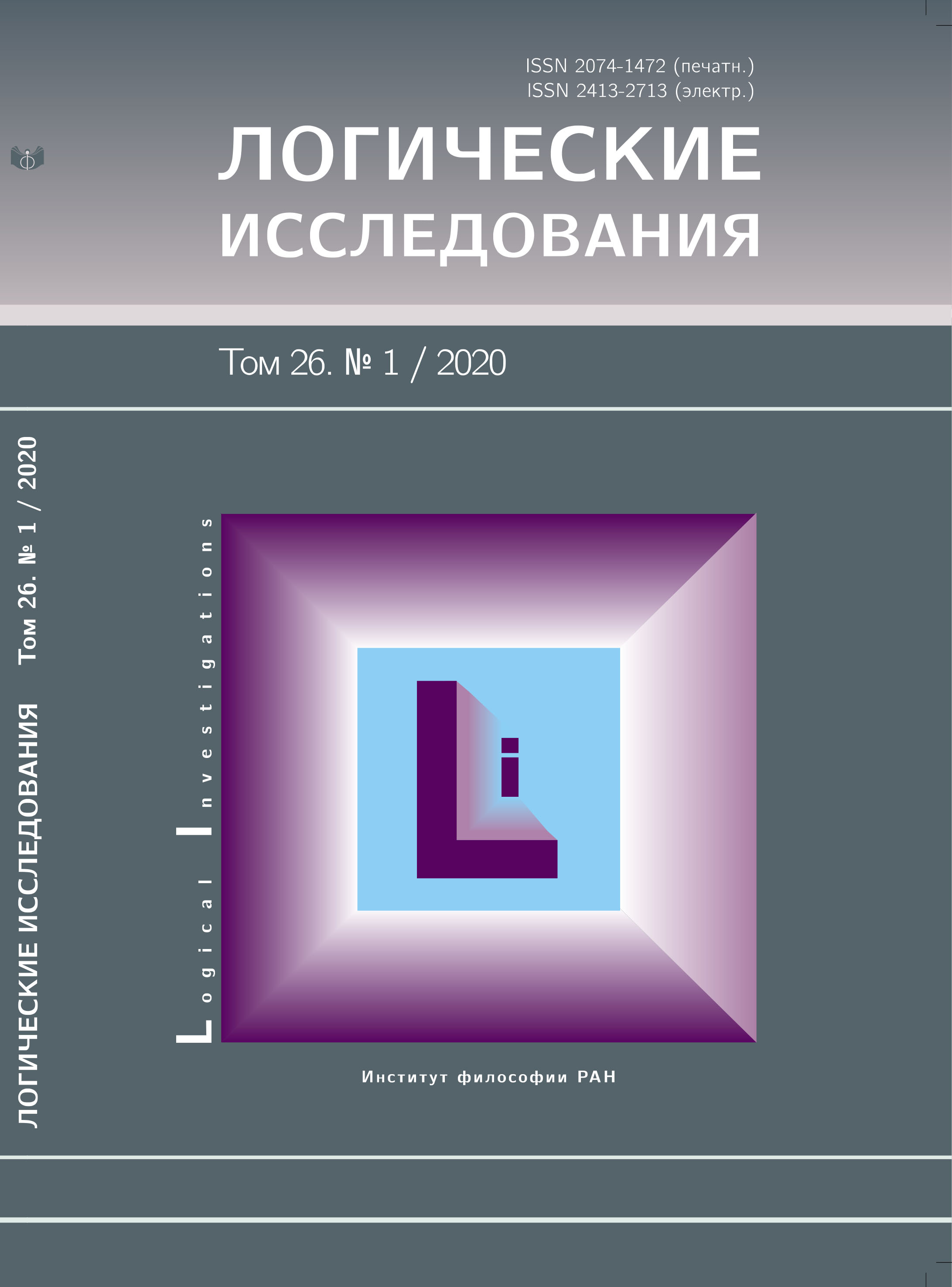Metatheory and dialetheism
Main Article Content
Аннотация
Given a formal language, a metalanguage is a language which can express — amongst other things — statements about it and its properties. And a metatheory is a theory couched in that language concerning how some of those notions behave. Two such notions that have been of particular interest to modern logicians — for obvious reasons — are truth and validity. These notions are, however, notoriously deeply entangled in paradox. A standard move is to take the metalanguage to be distinct from the language in question, and so avoid the paradoxes. One of the attractions of a dialetheic approach to the paradoxes of self-reference is that this move may be avoided. One may have a language with the expressive power to talk about — among other things — itself, and a theory in that language about how notions such as truth and validity for that language behave. The contradictions delivered by these notions are forthcoming, but they are quarantined by the use of a paraconsistent logic. The point of this paper is to discuss this project, the extent to which it has been successful, and the places where issues still remain.
Скачивания
Article Details
Copyright (c) 2020 Graham Priest

Это произведение доступно по лицензии Creative Commons «Attribution-NonCommercial» («Атрибуция — Некоммерческое использование») 4.0 Всемирная.
Литература
Cantini, 2003 – Cantini, A. “The Undecidability of Griˇsin’s Set Theory”, Studia Lo- gica, 2003, Vol. 74, pp. 345–368.
Carroll, 1895 – Carroll, L. “What the Tortoise Said to Achilles”, Mind, 1895, Vol. 4, pp. 278–280.
Kreisel, 1967 – Kreisel, G. “Informal Rigour and Completeness Proofs”, in: Problems in the Philosophy of Mathematics, ed. by I. Lakatos, Amsterdam: North Holland, 1967, pp. 138–157.
Kripke, 1975 – Kripke, S. “Outline of a Theory of Truth”, Journal of Philosophy, 1975, Vol. 72, pp. 690–716.
Priest, 1987 – Priest, G. In Contradiction, Dordrecht: Martinus Nijhoff; 2nd ed., Ox- ford: Oxford University Press, 2006.
Priest, 1997 – Priest, G. “On a Paradox of Hilbert and Bernays”, Journal of Philo- sophical Logic, 1997, Vol. 26, pp. 45–56.
Priest, 1998 – Priest, G. “The Trivial Object, and the Non-Triviality of a Semantically Closed Theory with Descriptions”, Journal of Applied and Non-Classical Logics, 1998, Vol. 8, pp. 171–183.
Priest, 1999 – Priest, G. “Semantic Closure, Descriptions, and Non-Triviality”, Journal of Philosophical Logic, 1999, Vol. 28, pp. 549–558.
Priest, 2002 – Priest, G. “Paraconsistent Logic”, in: Handbook of Philosophical Logic, Vol. 6, D. Gabbay, F. Guenthner (eds.), Dordrecht: Kluwer Academic Publishers, 2002, pp. 287–393.
Priest, 2005 – Priest, G. Towards Non-Being, Oxford: Oxford University Press; 2nd ed., 2016.
Priest, 2008 – Priest, G. Introduction to Non-Classical Logic: From If to Is, Cam- bridge: Cambridge University Press, 2008.
Priest, 2017 – Priest, G. “What If : the Exploration of an Idea”, Australasian Journal of Logic, 2017, Vol 14:1, article 1, https://ojs.victoria.ac.nz/ajl/article/ view/4028/3574.
Tarski, 1935 – Tarski, A. “Der Wahrheitsbegriff in den Formalisierten Sprachen”, Studia Philosophica, 1935, Bd. 1, S. 261–405. Translated as “The Concept of Truth in Formalized Languages”, in: Logic, Semantics, Metamathematics, ed. by J. Corcoran, 2nd ed., Indianapolis: Hackett, 1983, pp. 152–278.
Weber, 2010 – Weber, Z. “Transfinite Numbers in Paraconsistent Set Theory”, Review of Symbolic Logic, 2010, Vol. 3, pp. 71–92.
Weber, 2012 – Weber, Z. “Transfinite Cardinals in Paraconsistent Set Theory”, Review of Symbolic Logic, 2012, Vol. 5, pp. 269–293.
Weber, 2016 – Weber, Z. “What is an Inconsistent Truth Table?”, Australasian Journal of Philosophy, 2016, Vol. 94, pp. 533–548.
Young, 2005 – Young, G. Revenge: Dialetheism and its Expressive Limitations, PhD Thesis, University of Glasgow, 2005.
